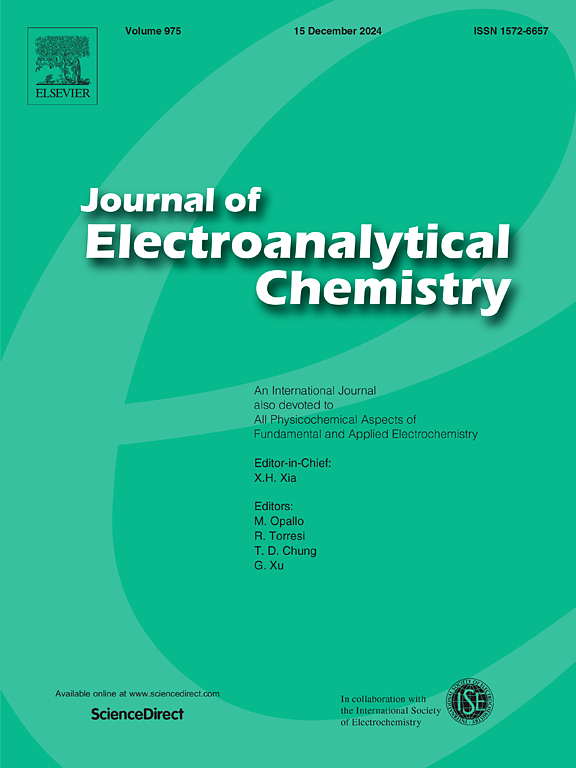Three-dimensional “skin-core” structures of FeCe co-doped PPy@FCC-ZIF by in-situ ion exchange etching to used stabilize water electrolysis in high current density
IF 4.1
3区 化学
Q1 CHEMISTRY, ANALYTICAL
引用次数: 0
Abstract
As an effective energy storage medium, hydrogen can store large-scale energy. At the same time, hydrogen energy solves the problem of renewable energy volatility and promotes the balanced allocation of energy. In all the hydrogen production methods, the use of electricity to drive water decomposition to produce hydrogen is a sustainable solution. In this paper, using PPy as the active intermediate layer, composite nanoarray electrocatalyst with three-dimensional “skin core” structure was prepared by in-situ growth of Co-ZIF and ion exchange etching of Fe and Ce elements. Among them, the existence of PPy can provide an active site for the growth of Co-ZIF, which improves the unstable situation of electrolysis of self-supporting catalyst based on nanosheet structure under high current density. In addition, the co-doping of Fe and Ce improved the electric field structure of Co-ZIF nanosheets and increased the catalytic activity of the catalyst. The prepared PPy@FCC-ZIF/NF catalysts have a low overpotential of 260 mV, 299 mV and 383 mV at current densities of 50, 200 and 500 mA cm−2, respectively. Even at the high current density of 1 A cm−2, the overpotential is only 440 mV. In addition, the electrolytic water system with PPy@FCC-ZIF/NF as anode exhibited stable electrolytic behavior. When using Pt/C as the cathode, the device can electrolysis 125 h with a stable working voltage of 1.70 V at 50 mA cm−2. When the commercial NiMo/NF catalyst is used as the cathode, it can be stably electrolyzed for 60 h at a high current density of 500 mA cm−2. This study provides the idea for the research of advanced three-dimensional self-supported electrocatalysts and the possibility for the construction of new commercial electrocatalysts.

求助全文
约1分钟内获得全文
求助全文
来源期刊
CiteScore
7.80
自引率
6.70%
发文量
912
审稿时长
2.4 months
期刊介绍:
The Journal of Electroanalytical Chemistry is the foremost international journal devoted to the interdisciplinary subject of electrochemistry in all its aspects, theoretical as well as applied.
Electrochemistry is a wide ranging area that is in a state of continuous evolution. Rather than compiling a long list of topics covered by the Journal, the editors would like to draw particular attention to the key issues of novelty, topicality and quality. Papers should present new and interesting electrochemical science in a way that is accessible to the reader. The presentation and discussion should be at a level that is consistent with the international status of the Journal. Reports describing the application of well-established techniques to problems that are essentially technical will not be accepted. Similarly, papers that report observations but fail to provide adequate interpretation will be rejected by the Editors. Papers dealing with technical electrochemistry should be submitted to other specialist journals unless the authors can show that their work provides substantially new insights into electrochemical processes.

 求助内容:
求助内容: 应助结果提醒方式:
应助结果提醒方式:


